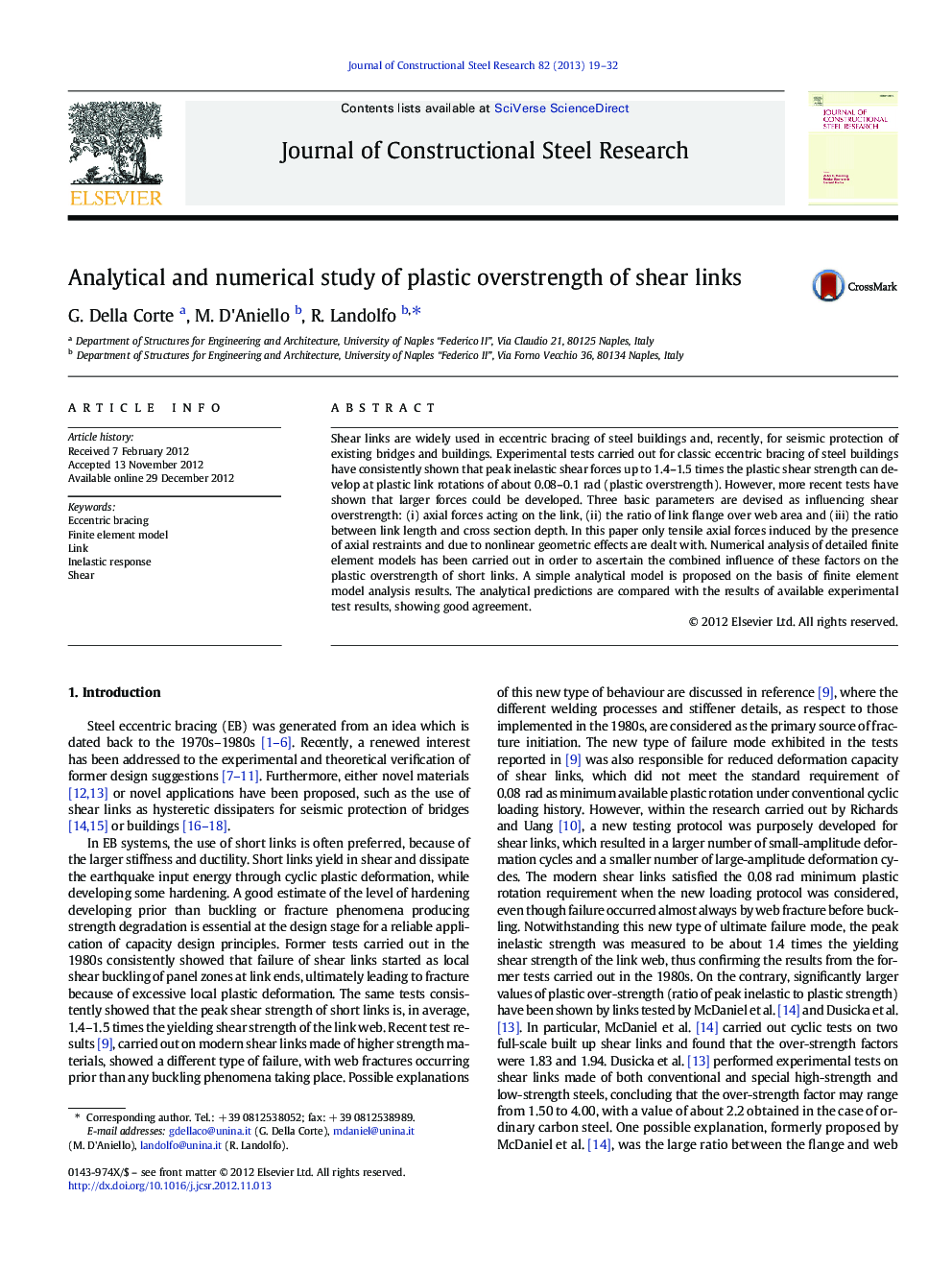| Article ID | Journal | Published Year | Pages | File Type |
|---|---|---|---|---|
| 284919 | Journal of Constructional Steel Research | 2013 | 14 Pages |
Shear links are widely used in eccentric bracing of steel buildings and, recently, for seismic protection of existing bridges and buildings. Experimental tests carried out for classic eccentric bracing of steel buildings have consistently shown that peak inelastic shear forces up to 1.4–1.5 times the plastic shear strength can develop at plastic link rotations of about 0.08–0.1 rad (plastic overstrength). However, more recent tests have shown that larger forces could be developed. Three basic parameters are devised as influencing shear overstrength: (i) axial forces acting on the link, (ii) the ratio of link flange over web area and (iii) the ratio between link length and cross section depth. In this paper only tensile axial forces induced by the presence of axial restraints and due to nonlinear geometric effects are dealt with. Numerical analysis of detailed finite element models has been carried out in order to ascertain the combined influence of these factors on the plastic overstrength of short links. A simple analytical model is proposed on the basis of finite element model analysis results. The analytical predictions are compared with the results of available experimental test results, showing good agreement.
► An analytical and numerical study on shear overstrength of short links is presented. ► Simple analytical models to predict link shear overstrength are proposed. ► Overstrength is affected by: axial forces, flange over web area, length over depth. ► Analytical predictions are in good agreement with FEM and experimental results.
